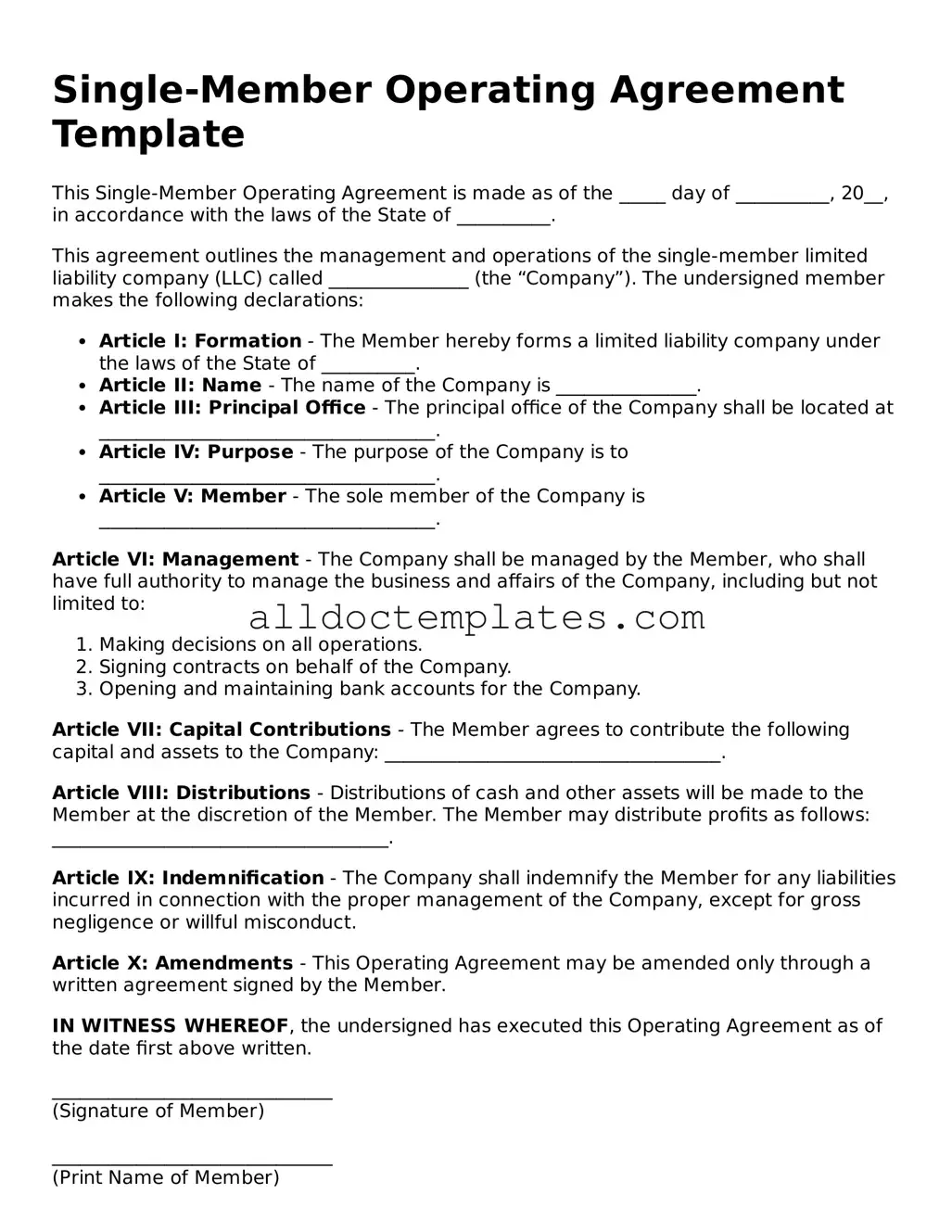Single-Member Operating Agreement Template
This Single-Member Operating Agreement is made as of the _____ day of __________, 20__, in accordance with the laws of the State of __________.
This agreement outlines the management and operations of the single-member limited liability company (LLC) called _______________ (the “Company”). The undersigned member makes the following declarations:
- Article I: Formation - The Member hereby forms a limited liability company under the laws of the State of __________.
- Article II: Name - The name of the Company is _______________.
- Article III: Principal Office - The principal office of the Company shall be located at ____________________________________.
- Article IV: Purpose - The purpose of the Company is to ____________________________________.
- Article V: Member - The sole member of the Company is ____________________________________.
Article VI: Management - The Company shall be managed by the Member, who shall have full authority to manage the business and affairs of the Company, including but not limited to:
- Making decisions on all operations.
- Signing contracts on behalf of the Company.
- Opening and maintaining bank accounts for the Company.
Article VII: Capital Contributions - The Member agrees to contribute the following capital and assets to the Company: ____________________________________.
Article VIII: Distributions - Distributions of cash and other assets will be made to the Member at the discretion of the Member. The Member may distribute profits as follows: ____________________________________.
Article IX: Indemnification - The Company shall indemnify the Member for any liabilities incurred in connection with the proper management of the Company, except for gross negligence or willful misconduct.
Article X: Amendments - This Operating Agreement may be amended only through a written agreement signed by the Member.
IN WITNESS WHEREOF, the undersigned has executed this Operating Agreement as of the date first above written.
______________________________
(Signature of Member)
______________________________
(Print Name of Member)
